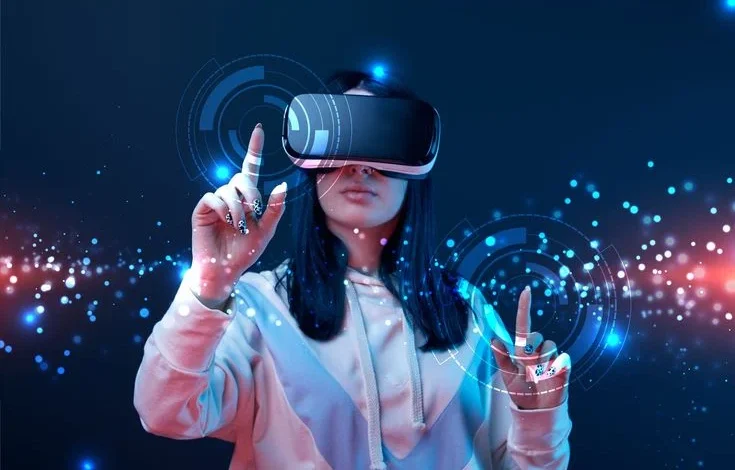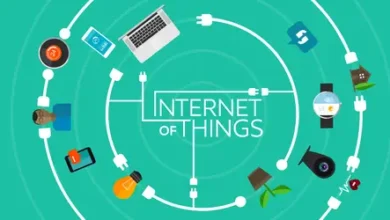Definition of Virtual Reality: The Future of Immersive Technology

Imagine stepping into a new world without leaving the comfort of your home, feeling the adrenaline rush as you climb Mount Everest or dive deep under the sea, all while sitting in your living room. Welcome to the era of Virtual Reality (VR), an immersive technology that is reshaping our concepts of interaction and experience. With each passing year, VR takes giant strides in transforming various sectors like gaming, education, healthcare, and more. The rapid growth and acceptance of this innovation demonstrate its immense potential. It might not be long before VR becomes part of our daily lives! This post will explain the definition of virtual reality and how it came onto the scene with such a staggering impact. Exploring both its current applications and future possibilities. Come along on this exciting journey through digital landscapes as we explore “The Rise of Virtual Reality: The Future Of Immersive Technology”.
“Understanding Virtual Reality: An Overview”
Virtual reality (VR) technology has rapidly advanced in recent years, revolutionizing the way we interact with digital environments. VR creates immersive experiences by simulating realistic three-dimensional worlds that users can explore and interact with. By wearing a headset and sometimes additional handheld controllers, users are transported into fully realized virtual spaces that can range from fantastical landscapes to realistic simulations of real-world locations. This technology holds vast potential not only in entertainment but also in fields like education, healthcare, and training. The ability of VR to provide a truly immersive experience challenges traditional notions of interaction with technology. This opens up new possibilities for how we engage with the digital world. For more insights, explore this deep dive into virtual reality and its applications.
“Technological Innovations Driving the Growth of VR”
Virtual Reality (VR) is experiencing a rapid growth trajectory, propelled by a wave of technological innovations that are reshaping the immersive technology landscape. One of the key drivers of this growth is the advancement in hardware capabilities. Cutting-edge VR headsets, such as the Oculus Rift and HTC Vive, offer high-resolution displays, precise motion tracking, and intuitive controllers, providing users with a more realistic and immersive experience. These advancements in hardware have significantly enhanced the visual fidelity and responsiveness of VR environments. Thereby making them more lifelike and engaging for users.
Another crucial factor fueling the growth of VR is the development of innovative software applications and experiences. From immersive gaming experiences to virtual travel and training simulations, VR content creators are pushing the boundaries of what is possible within the virtual realm. The development of compelling and interactive content has been instrumental in attracting a wider audience to embrace VR technology. Furthermore, the integration of artificial Intelligence (AI) and machine learning algorithms is revolutionizing the way VR experiences are created and delivered.
AI-powered technologies are being used to generate realistic environments, enhance user interactions, and personalize experiences based on individual preferences. This convergence of AI and VR is opening up new possibilities for creating highly personalized and engaging virtual worlds. In conclusion, technological innovations in hardware capabilities, software development, and AI integration are driving the rapid growth of VR technology. As these advancements continue to evolve, VR is poised to become an even more immersive and ubiquitous technology. It is shaping the way we interact with digital content and transforming various industries across entertainment, education, healthcare, and beyond.
“Implications of Virtual Reality in Different Industries”
Virtual reality (VR) technology has the potential to revolutionize various industries by offering immersive and interactive experiences. In the healthcare sector, VR is being used for medical training, patient therapy, and even surgical simulations.
Medical students can practice procedures in a realistic virtual environment, reducing the need for expensive cadavers and minimizing risks to real patients. VR therapy has shown promise in treating phobias, PTSD, and chronic pain. It helps create controlled environments for patients to confront and manage their conditions. Additionally, VR simulations provide surgeons with a safe space to practice complex surgeries before operating on real patients. This improves surgical outcomes and reduces errors. In the education field, VR is transforming traditional learning methods by providing students with hands-on experiences that enhance understanding and retention of complex concepts.
Students can explore historical sites, dissect virtual organisms, or even travel to outer space without leaving the classroom. This technology not only makes learning more engaging but also accommodates different learning styles and abilities. Moreover, in the architecture and real estate industries, VR is used to create immersive 3D models of buildings and properties. This allows clients to virtually walk through spaces before construction begins. This not only streamlines the design process but also helps clients visualize the final product more accurately, leading to better-informed decisions. Overall, the implications of virtual reality in different industries are vast and promising. The technology continues to push boundaries and redefine how we interact with the world around us.
“Challenges and Limitations of Implementing VR Technology”
While the potential of virtual reality (VR) technology is vast and exciting, several challenges and limitations should be considered. One major challenge is the high cost of developing and implementing VR systems, which can be prohibitive for many organizations. Additionally, the technology is still relatively new and evolving rapidly, leading to compatibility issues and a lack of standardized protocols. Another limitation is the risk of motion sickness and other side effects for users, which can hinder widespread adoption. Moreover, concerns about privacy and data security in VR environments pose significant obstacles to its mainstream integration. Overall, overcoming these challenges will be key to unlocking the full potential of VR technology in various industries.
“Future Prospects for Virtual Reality Technologies”.
Prospects for virtual reality technologies are incredibly promising, with experts predicting significant growth and advancements in the coming years. As technology becomes more accessible and affordable, we can expect to see virtual reality applications expand beyond gaming and entertainment into fields like education, healthcare, and business. Virtual reality has the potential to revolutionize industries by offering immersive training experiences, innovative solutions for remote collaboration, and enhanced customer engagement. With the continued development of hardware and software, virtual reality technology is poised to become an integral part of everyday life. It is greatly transforming how we work, communicate, and interact with the world around us.





